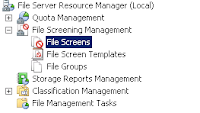Enter Bitcoin...
What is bitcoin? (this extract is taken from bitcoin.org)
Bitcoin is a peer-to-peer currency. Peer-to-peer means that no central authority issues new money or tracks transactions. These tasks are managed collectively by the network.
A modern day gold rush...
The fact bitcoin has no central issuing authority means someone needs to issue the currency, thats where your old hardware comes in, specifically GPUs. Bitcoin is based on cryptography and each block of currency can be generated in a process called "Bitcoin Mining". Basically you load the software onto your system, preferably with some AMD GPU's (5870, 5850, 6970 and 6990 are best) and let the mining software generate Bitcoins. If you want to start mining, it is best to consider mining in a pool. That way you get regular small pay outs and have greater chances of making more bitcoins than going solo. I am part of slush's mining pool http://mining.bitcoin.cz/
An end in sight...
This won't go on forever though, as there are currently about 6 million bitcoins in the wild and the process and the difficulty factor will continue to go up (that means it takes longer to generate each bitcoin) until a figure of around 18 million bitcoins are in the wild. At the moment it takes roughly 45 minutes to generate each bitcoin, but some take as little as 5 minutes while others take up to 2 hours.
Cashing in...
Once you have generated your bitcoins, you can cash them in on sites like Mt Gox (http://www.mtgox.com/) which is very similar to a traditional currency exchange but they trade bitcoins for cash. At the time of writing this article I am making 1.56 bitcoins a day, which at the current exchange rate of $19.4 each, I should make roughly $900 a month. That is for NOW though, shortly the difficulty will take another leap (which it does on a periodic basis) and my profit will go down to about $600 a month. There is also a high possibility of the bitcoin exchange rate taking a dive, and that will also effect profitability.
The Rig..
I am using a rig of old parts I had from past overclocking adventures. My current rig is using a Gigabyte 790FX board, with a AMD 965, 4GB of Patriot memory and 3x Gigabyte EAH5870 and a 1050W psu.
If you don't have the parts it could be costly to get in, but this awesome calculator can help work out if it is worth you building a platform. Remember the difficulty could change in the future and make your income go down considerably.
http://bitcoinx.com/profit/
The Outcome..
Well I am only 2 days into my bitcoin adventures but I am liking what I am seeing. I will write another blog post at the end of the month to let you all know if I think its worth my while, how much it is costing me in electritity and if I am going to add another rig into the equation.
All the information you need to get started is here http://www.bitcoin.org/








